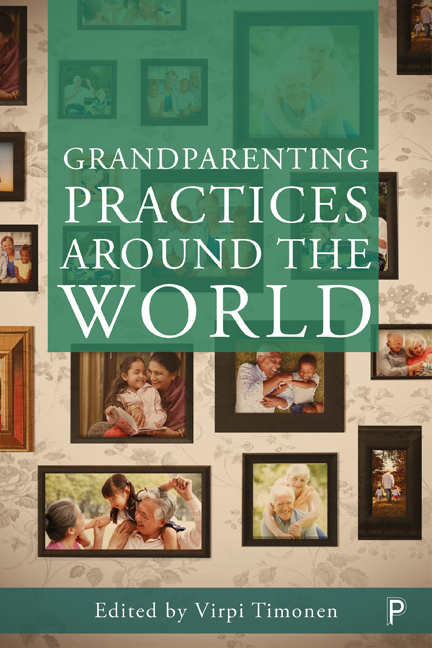Book contents
- Frontmatter
- Contents
- List of figures and tables
- List of abbreviations
- Notes on contributors
- one Introduction: widening the lens on grandparenting
- PART 1 The demographic and welfare-state contexts of grandparenting
- PART 2 Grandparenting in contexts of economic and societal development
- PART 3 Transnational grandparenting
- PART 4 Gender, intersectionalities and grandparenting
- PART 5 Grandparental roles, agency and influence
- Index
eleven - How grandparents influence the religiosity of their grandchildren: a mixed-methods study of threegeneration families in the United States
Published online by Cambridge University Press: 22 April 2022
- Frontmatter
- Contents
- List of figures and tables
- List of abbreviations
- Notes on contributors
- one Introduction: widening the lens on grandparenting
- PART 1 The demographic and welfare-state contexts of grandparenting
- PART 2 Grandparenting in contexts of economic and societal development
- PART 3 Transnational grandparenting
- PART 4 Gender, intersectionalities and grandparenting
- PART 5 Grandparental roles, agency and influence
- Index
Summary
Introduction
How values such as religion are communicated and transmitted across generations is important for understanding the linkage between family-level processes and macro-societal change. Surveys have shown historical declines in the centrality of religious affiliation in the United States, particularly in the past three decades (Pew Forum on Religious and Public Life, 2015). However, we know relatively little about how religious orientations are (or are not) reproduced within family lineages or about the complex, often poignant emotional issues that surface within families about religion. In this study, we take a mixed-methods and within-family approach to identify the distinctive processes by which religiosity is, or is not, passed down from grandparents to subsequent generations.
During the past half-century, historical forces have significantly altered the cultural landscape of society in the US, weakening the social institutions that mediate between individuals and the larger society. Frequently mentioned among these are organised religion and the family (Putnam, 2000). Cultural trends such as increased individualism, the growing influence of mass and digital media and the proliferation of non-traditional families caused by divorce and remarriage have been described as weakening the traditional role of older generations as agents of socialisation for younger generations (Bellah et al., 1985; Cherlin, 2009; Putnam, 2000; Putnam and Campbell, 2010). Polls show that participation in religious activities, such as service attendance, has declined in recent years, and people – younger people in particular – are less likely to affiliate with a religious institution than in the past several decades (Pew Forum on Religious and Public Life, 2012, 2015).
Based on the life-course perspective and a theoretical model of intergenerational solidarity, we use qualitative and quantitative data from a longitudinal study of multigenerational families and apply a mixed-methods approach to examine the religious influence of grandparents on descending generations. Following the literature on intergenerational transmission of values (Schönpflug, 2001), we conceptualise intergenerational influence as the extent to which religious beliefs and values are transmitted and passed on to children and grandchildren. We analyse quantitative survey data to describe common patterns in the progression of religious intensity from grandparents to their adult children and grandchildren, and then use qualitative data from in-depth interviews to gain a deeper understanding of the processes or mechanisms of cross-generational religious influence of grandparents.
- Type
- Chapter
- Information
- Grandparenting Practices around the World , pp. 211 - 232Publisher: Bristol University PressPrint publication year: 2018

